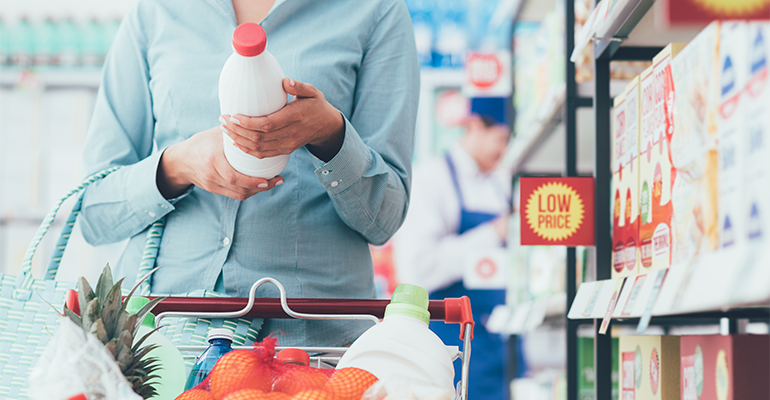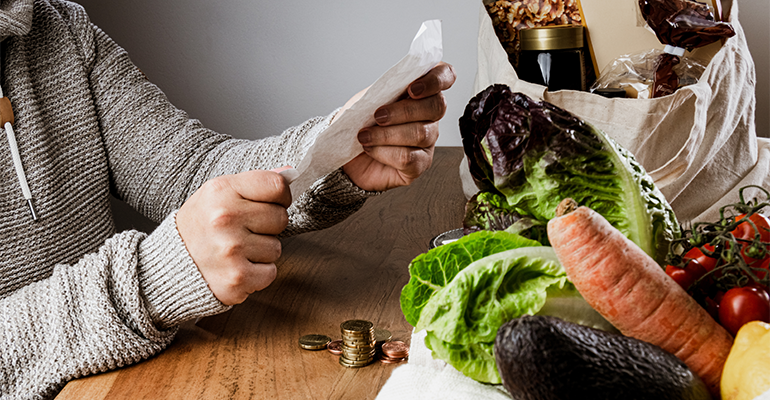News
Most food businesses are placing inflationary costs on consumers, survey finds
31 Aug 2022
Consumers are being hit with product price increases as manufacturers pass on higher costs to the public. But with some major food manufacturers registering profits, is a public backlash on the cards?
It is an expensive time to be a consumer right now. Russia’s invasion of Ukraine in late February 2022, the lasting effects of the Covid-19 pandemic, and record-high inflation are just a handful of the factors driving the current cost-of-living crisis.
Russia and Ukraine, which together account for more than a third of global wheat and barley exports, have seen their output drastically reduced, which has led to far-reaching global food shortages and supply chain disruptions.

These issues of supply and demand are so pronounced that in April the Food and Agriculture Organization’s (FAO) food price index, which records prices of the world’s most commonly traded food commodities, reached its highest point since records began, increasing over 58% from the rate it stood at six years prior.
Ingredients Network recently carried out a survey to determine the impact of current supply chain disruptions on the food and beverage industry, questioning its database of industry professionals and receiving responses from around the world. It found the extent of these disruptions to be far-reaching with over 40% of respondents citing the war in Ukraine and reduced supplies of grain, oilseed and other commodities as having had the greatest impact on business in recent years.
The least wealthy consumers face the biggest losses
For food manufacturers, suppliers, and consumers alike, this translates into higher outgoings and less cash in the bank. Where consumers in particular are concerned, rising prices are the top source of concern, with sixty percent of British respondents saying that the price crisis was their main source of worry, followed by 40% of Spaniards, 44% of French respondents, 40% of Germans and 32% of Italians, according to a recent survey and report by consultancy McKinsey.
Consumers are feeling the crunch, and it’s no surprise, with one survey from Mazars and another conducted by Fi Global Insights finding that as much as 78% and 53% of businesses respectively, have passed on at least some of their inflation costs directly to consumers.
As food prices surge, it is those at the lowest end of the income ladder who are being disproportionately hardest hit. Developing economies such as Ethiopia (54%) and Nigeria (50.7%), for whom a higher percentage of their consumer price index (CPI) is made up of food stuffs, compared with more developed nations such as the UK (11.6%) are facing the steepest increases, data from Haver Analytics shows.
Not only does this mean that consumers are worse off financially, but it also threatens to reverse some of the progress that has been realised over the past two decades in global poverty and hunger alleviation. High inflation combined with the aftermath of the pandemic and rising socio-political tensions could plunge a further 75 to 95 million people into poverty in 2022, according to estimates from the World Bank. At the same time, continued disruptions to food supplies could see a rise in malnutrition and hunger in an additional 13 countries, the Global Hunger Index predicts.

AdobeStock/Pamela
Increased product prices equal increased profits
At the other end of the scale, the same does not seem to ring true for large corporates operating in the food and drink space. In fact, as businesses release their quarterly results, it is quickly emerging that the balance sheets and bank accounts of the biggest food brands may actually be benefitting from rising living costs.
Many of the world’s major food manufacturers including Unilever, Jacobs Douwe Egberts, Nestlé, FrieslandCampina and Kraft Heinz recently reported significant growths in turnover, profit, or in some cases, both. The main driver behind this? Increases in the sale price of products. Take Nestlé for instance, which over the course of the past year hiked the prices of products by an average of 6.5% while recording an 8.1% (€ 46.5 billon) sales growth. Similarly, Jacobs Douwe Egberts, Dutch coffee manufacturer, saw a decrease in sales over the past year, yet an increase in turnover of 16% due to price rises, according to food industry watchdog, Foodwatch.
In the last six months as compared to 2021, consumer goods giant Unilever, made gains of 8% on its annual turnover, while reportedly having passed on as many as three-quarters of the inflation account to consumers, according to Reuters. American multinational Kraft Heinz recorded an eyewatering rise in profit of 1136.4% last year alone, despite decreasing product sales by 2%, a recent press release from the company revealed.
Inflation expected to rise further
Consumer food price inflation remains a global challenge. In the US, the Department of Agriculture (USDA) predicts food price inflation will sit between 8.5 to 9.5% higher this year than in 2021, representing the greatest food price inflation rate in over forty years.
While in the Eurozone, inflation is rising even higher. According to data from the European Central Bank’s (ECB) latest Harmonised Index of Consumer Prices (HICP), price inflation for food and non-alcoholic drinks was 10.4% in June, with the highest rates in Estonia (22%) and lowest in Malta (6.1%).
As inflation soars and companies continually raise the price of products, it will remain to be seen whether consumers stay loyal to their favourite brands or opt for cheaper, own-brand alternatives. Or will food businesses seek out new methods to absorb extra costs themselves, as data from Fi Global Insights shows one quarter (25%) are already doing, rather than passing on the financial burden to the consumer?
